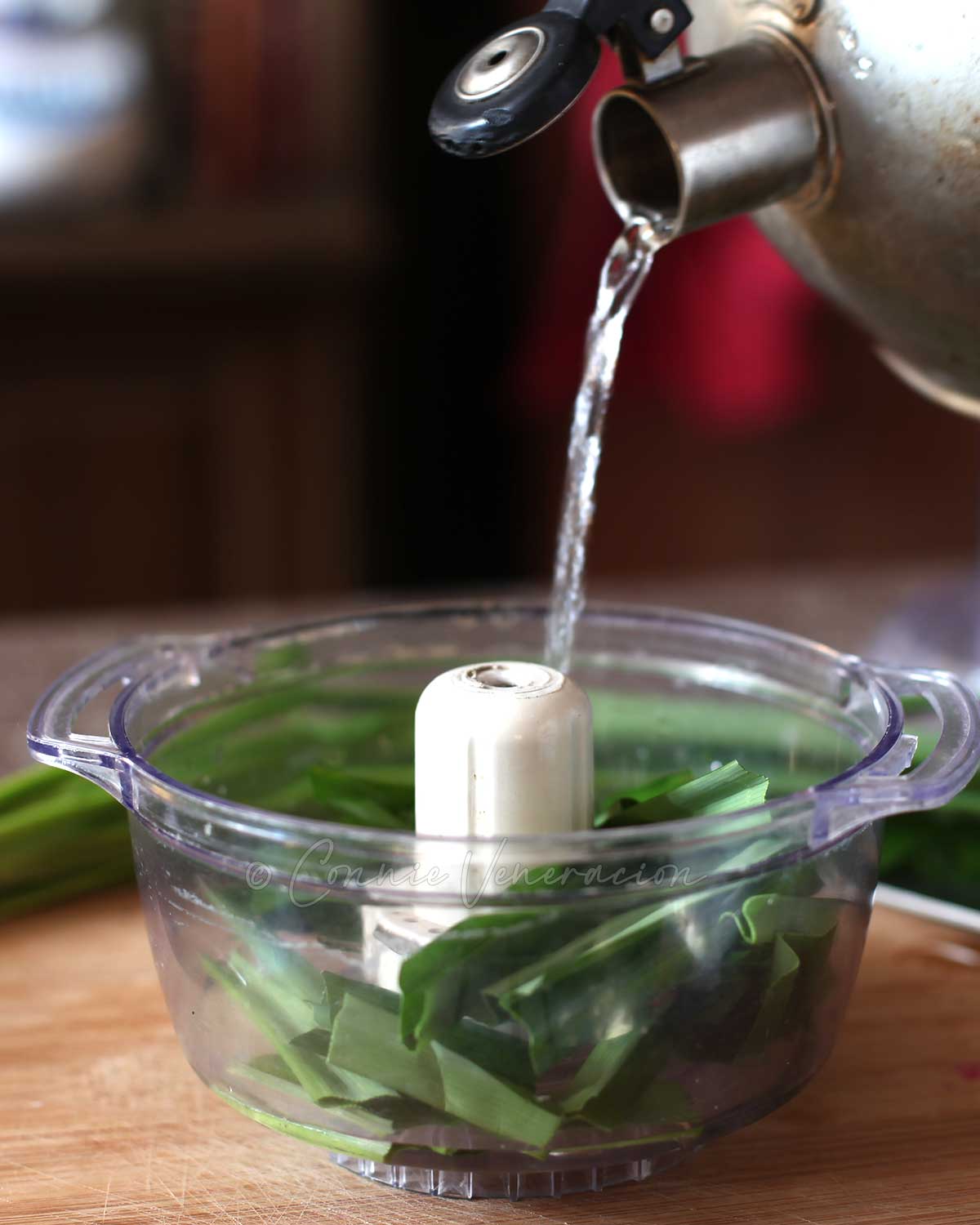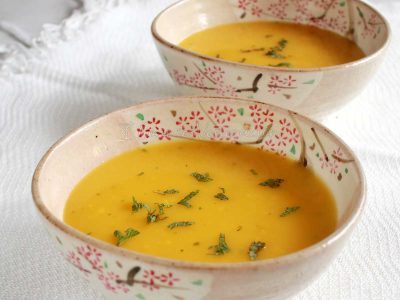The aroma is indescribable and its effect on the psyche is pleasant and soothing. Add a leaf to rice while cooking and the term “plain rice” loses its meaning. For us who grew up with it, we often crave it subconsciously. A meal with the smell of pandan engulfing the room feels like being enveloped in the comfort of one’s home and being in tune with one’s native culture.
What is pandan?
Pandan belongs to the family of Pandanaceae, tropical and subtropical flowering plants of which there are over 900 known species. Only one, the Pandanus amaryllifolius is used in cooking.
We grow pandan in our home garden. The long, narrow leaves burst out like a spray. Pluck a leaf and you can hardly make out any distinctive smell. But put it in food and it reacts to heat. It is only during cooking, and after, that you start to appreciate its wonders.
Use of pandan in Southeast Asian cooking is widespread as it flavors both sweet and savory dishes. The leaves themselves are not edible. The trick is to coax the aroma and flavor from them and transfer both into the food you’re cooking.
Add pandan leaves to rice, congee, soups and stews

The most common use for pandan leaves is to add them to rice before cooking. You take a leaf or two, tie them into a knot and drop it into the pot of rice. If you’re making congee, you can throw in pandan leaves while the rice softens. The rice will absorb the aroma and flavor of the pandan leaves during cooking. Discard the pandan leaves before serving the rice or congee.
But why tie the leaves into a knot? Well, mostly, because that’s how it’s been done for ages. But, if we as what makes it a smart technique, think about the ease of removing the leaves after cooking so they can be discarded. Instead of fishing out loose pandan leaves one by one, you just lift the knotted leaves and discard. Practical.

When adding to soups and stews, the principle is observed. Whole leaves are formed into a knot and dropped into the pot with the rest of the ingredients. During cooking, the aroma and flavor of the pandan leaves get transferred to the broth / sauce.
Use pandan leaves to wrap meat or seafood before cooking
You must have come across pandan chicken, right? No? Ooohhhh…. Okay, it’s chicken fillets marinated in coconut milk, seasonings and spices, wrapped in pandan leaves and fried or grilled.

But it isn’t just chicken that you can wrap with pandan leaves. You can do the same with fish or other seafood, ground meat.
Make pandan water / extract
If the dish you’re making requires both the aroma and color of pandan leaves, you will need to extract both.

Rinse the pandan leaves and into small pieces.

Place in a food processor and add hot water. Allow to cool before processing into smithereens. An alternative is to place the cut leaves in a heatproof bowl, pour in hot water, cool and plunge in an immersion blender to break up the fibrous leaves.

Strain the pandan water into a bowl. It is ready to use at this point.

But if want to squeeze out all the color and flavor in the leaves, press the chopped leaves against the strainer to force out all the juices.
Are the substitutes for pandan leaves?
No.
There is a website whose American owner claims to be (or to have been) a chef, and he alleges that matcha, banana leaves or celery leaves can be substituted for pandan leaves. It simply isn’t true. Anyone who is truly familiar with pandan leaves will easily catch the lie.
If you want only the green hue and you use matcha, you’ll get the color but not the aroma of pandan. As far as flavor goes, there is a trace of bitterness in matcha which is absent in pandan.
If you want leaves to wrap food with and you use banana leaves, again, the end result will be vastly different. The aroma that banana leaf imparts to food wrapped in it is an aroma distinct to banana leaves that is not even close to the aroma of pandan leaves.
Celery leaves? I won’t even dignify that with a discussion.
What about pandan extract? Good quality ones will work. But do check that there is no artificial color. Some commercially available pandan extracts are laced with so many enhancers that the green color is nowhere near the hue of natural pandan extract.







